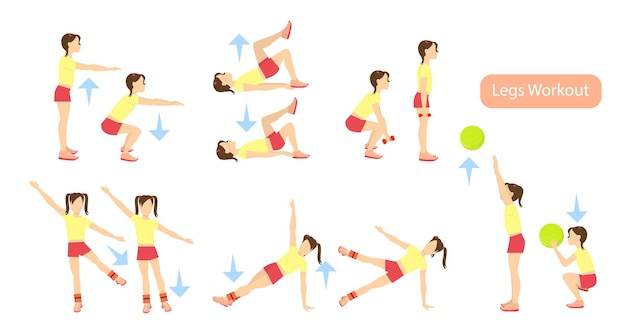Runners know that cardiovascular endurance is key, but few realize how much strength training—especially when combined with HIIT (High-Intensity Interval Training) and interval protocols—can amplify heart health. While running strengthens the heart over time, integrating targeted resistance exercises enhances cardiac efficiency, improves circulation, and reduces long-term cardiovascular risks.
This guide outlines 10 actionable strength training strategies specifically designed for runners, with built-in progress checks to track improvements in both performance and heart health.
Full-body strength circuits elevate heart rate while building muscle. Perform compound movements like squats, push-ups, lunges, and rows in quick succession with minimal rest.
Action Step: Complete 3 rounds of 10 reps each for 5 exercises (e.g., goblet squats, dumbbell rows, planks, push-ups, jump lunges).
Progress Check: Monitor resting heart rate monthly. A consistent drop indicates improved cardiac efficiency.

Combine strength moves with HIIT by alternating 30 seconds of intense effort (e.g., kettlebell swings) with 30 seconds of rest. This spikes heart rate and improves VO2 max.
Action Step: Perform 8–10 rounds of 30/30 intervals using explosive strength exercises.
Progress Check: Time how long you can sustain 80% max effort. Improvement over 4–6 weeks signals better aerobic capacity.
Explosive lower-body moves like jump squats and box jumps increase stroke volume—the amount of blood pumped per heartbeat.
Action Step: 3 sets of 8–10 reps of plyometric exercises twice weekly.
Progress Check: Track running pace at a consistent heart rate zone. Faster pace at same HR = improved cardiac output.
Slow, controlled lowering phases (eccentrics) in strength moves like slow squats or Nordic curls improve blood vessel elasticity and reduce systolic pressure.
Action Step: Perform 3 sets of 8 reps with 3–4 seconds on the lowering phase.
Progress Check: Use a home blood pressure monitor weekly. Look for lower systolic readings over time.
Dynamic band-resisted movements (e.g., banded walks, leg swings) activate muscles and prime the cardiovascular system before runs.
Action Step: 5-minute banded warm-up before every run or strength session.
Progress Check: Note reduced pre-run heart rate spikes after 3 weeks.
A strong core improves breathing mechanics and running posture, reducing cardiac strain during long runs.
Action Step: Add loaded carries (e.g., farmer’s walks) and anti-rotation presses 2x/week.
Progress Check: Observe improved breathing rate and reduced perceived effort during tempo runs.

Pair upper and lower body exercises (e.g., dumbbell press + bodyweight squat) with no rest. This keeps the heart engaged without overloading joints.
Action Step: 3 supersets of 3 exercise pairs, 1-minute rest between supersets.
Progress Check: Use a fitness tracker to ensure heart rate stays in Zone 3–4 for at least 15 minutes during session.
On easy run days, do low-load, high-rep strength work (e.g., bodyweight circuits). This promotes blood flow and recovery without stressing the heart.
Action Step: 20 minutes of light resistance training post-run.
Progress Check: Monitor morning heart rate variability (HRV). Improved HRV indicates better autonomic balance.
Improvements in strength (e.g., lifting heavier or more reps) correlate with better cardiac workload tolerance.
Action Step: Log strength progress every 2 weeks and compare with running performance.
Progress Check: Increased strength with stable or lower heart rate during runs = improved efficiency.
Every 4–6 weeks, reduce volume and intensity. This prevents overtraining and supports long-term heart health.
Action Step: Cut strength volume by 50% and focus on form and mobility.
Progress Check: Post-deload, observe faster heart rate recovery after runs and improved energy levels.
Strength training isn’t just for building muscle—it’s a powerful tool for heart health, especially when tailored to runners using HIIT and interval principles. By integrating these 10 strategies, you’ll not only run stronger but also protect and enhance your cardiovascular system for years to come.
Consistency, tracking, and smart programming are the keys to lasting results. Start with one or two strategies and build from there.

Fitness

Fitness

Fitness

Fitness

Health

Health

Health

Health

Health

Health

Fitness

Health

Health

Fitness

Health

Health